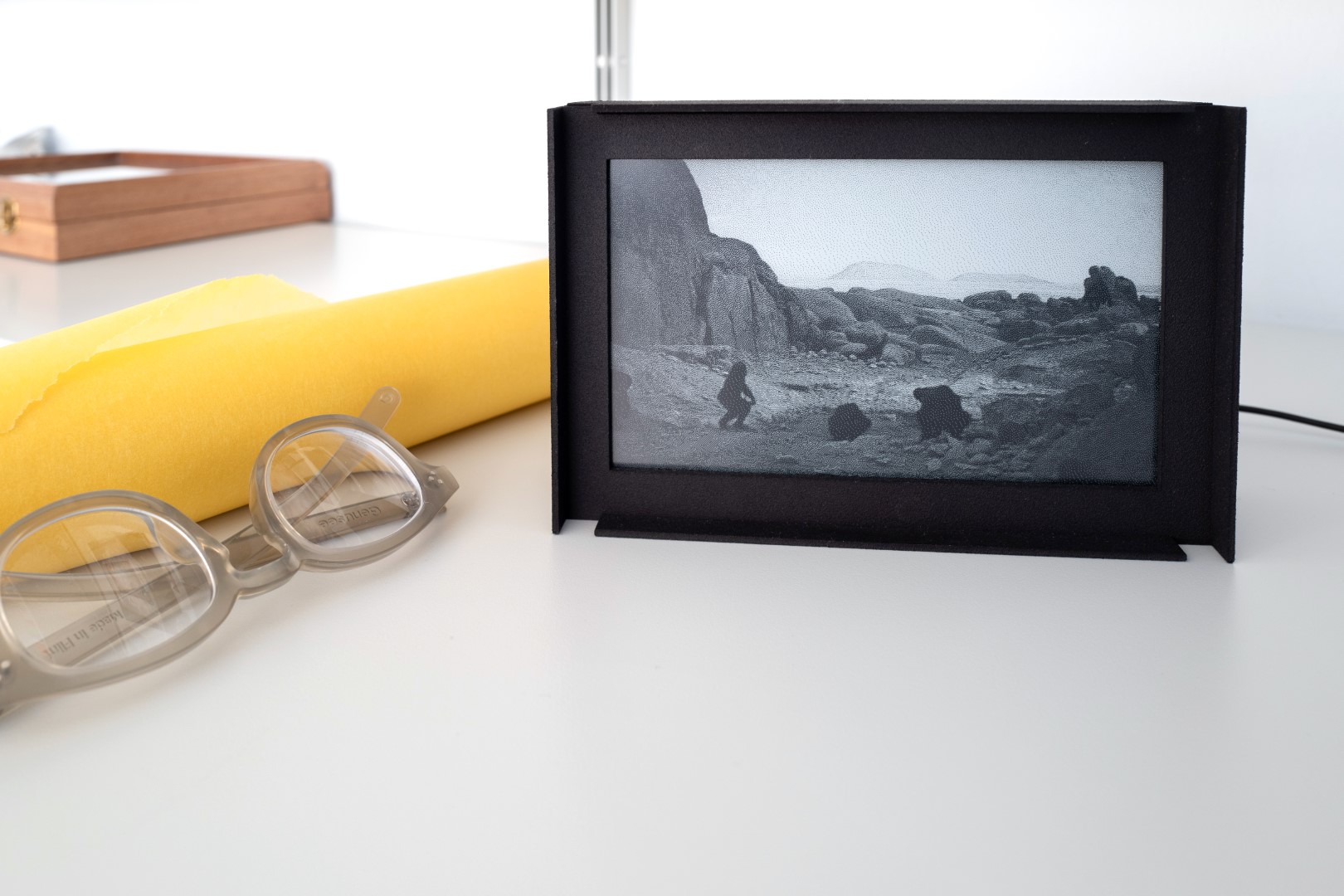In December 2018, Bryan Boyer published “Creating a Very Slow Movie Player” on Medium. It’s a wonderful essay about light and architecture and Brasília. Boyer describes building an e-paper display that shows films at 24 frames per hour, rather than 24 frames per second. So it would take about a year to play the 142 minutes of 2001: A Space Odyssey.

I thought about Boyer’s essay often. I visited the e-paper department at Waveshare, a Shenzhen-based electronics retailer, and when they offered a 7.5-inch e-paper screen with all the connections for a Raspberry Pi, I bought one and got it working over a couple of days.
It’s been playing Psycho in the corner of our dining room for months. I set it to run slightly faster than Boyer’s — it refreshes every 2 minutes, and jumps forward 4 frames each time. That’s about 2 minutes of screen time per 24 hours, a little under 3 months for a full 110-minute film.
Psycho is full of visual treats, which reveal themselves very gradually. Some images — like Janet Leigh driving — stuck around for weeks, while the shower scene was over in a day and a half.
BUILDING YOUR OWN VSMP
If you want to build one for yourself, there are four things to do:
1. Get the Raspberry Pi working in headless mode without a monitor, so you can upload files and run code.
2. Connect to the e-paper screen and install the driver code on the Pi.
3. Write some code (or use mine — link below) to extract frames from a movie file, resize and dither those frames, display them on the screen, and keep track of progress through the film.
4. Find some kind of frame to keep it all together.
This is a relatively straightforward project. There’s no soldering and no hardcore coding. If you’re at all comfortable using a command line, and you’ve seen a Python script before, then you’ll be fine. You can build my version and see Bryan’s original on Medium . Or build a new version!
TIME AND LIGHT
“The screen technology used in VSMP is reflective like a Kindle instead of emissive like a television or computer, which means that the image is always a compromise with the environment. If the room is dark, VSMP’s imagery is dark. If the light is warm, VSMP is warm. If the room is bright, VSMP is bright. The device’s interactions with shadow and ambient light are its most distinguishing feature.”
—Bryan Boyer














